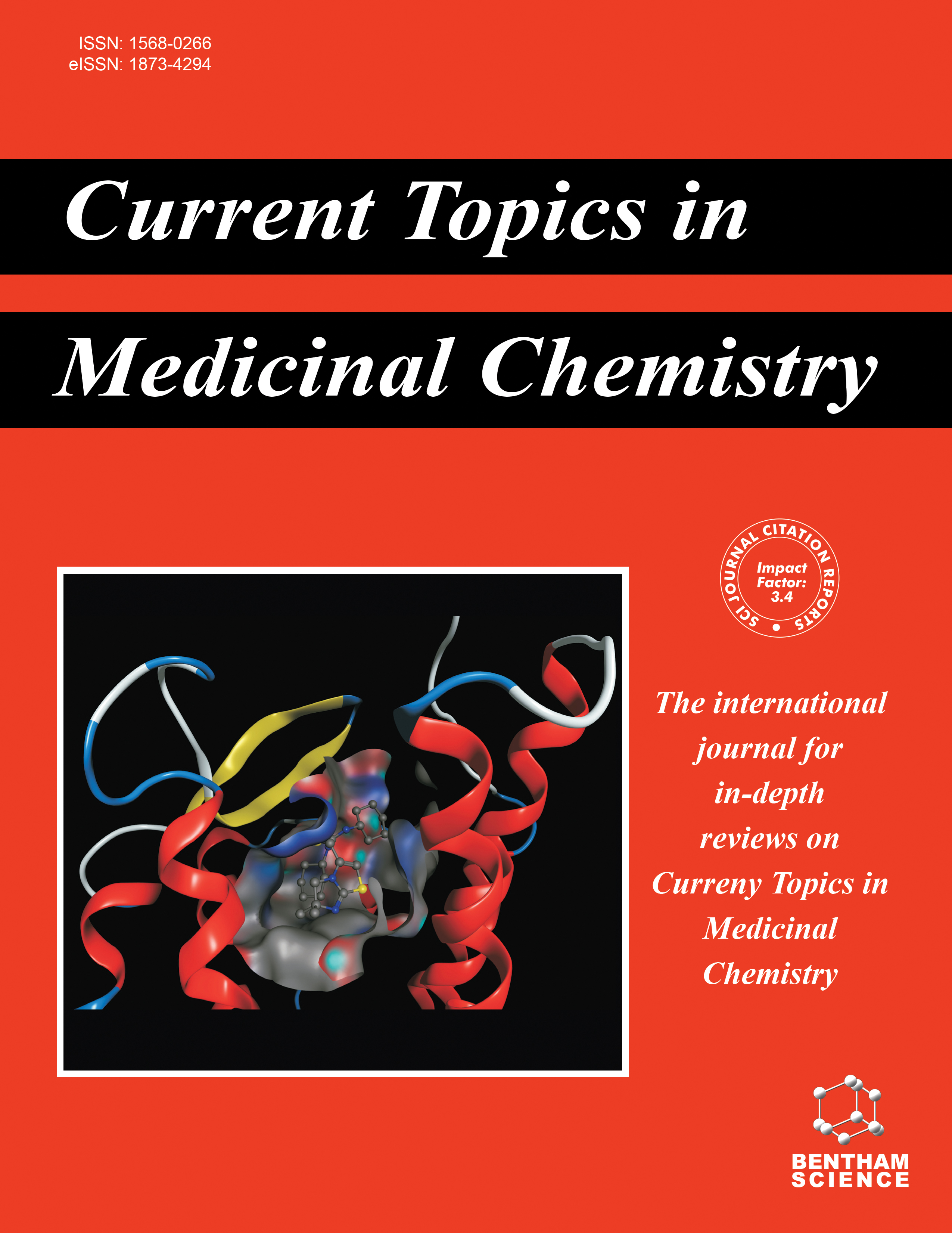- Home
- A-Z Publications
- Current Topics in Medicinal Chemistry
- Previous Issues
- Volume 17, Issue 10, 2017
Current Topics in Medicinal Chemistry - Volume 17, Issue 10, 2017
Volume 17, Issue 10, 2017
-
-
Animal Venom Peptides: Potential for New Antimicrobial Agents
More LessAuthors: Muriel Primon-Barros and Alexandre José MacedoMicrobial infections affect people worldwide, causing diseases with significant impact on public health, indicating the need for research and development of new antimicrobial agents. Animal venoms represent a vast and largely unexploited source of biologically active molecules with attractive candidates for the development of novel therapeutics. Venoms consist of complex mixtures of molecules, including antimicro Read More
-
-
-
Repurposing of Anticancer Drugs for the Treatment of Bacterial Infections
More LessDespite the fact that bacterial infections are one of the leading causes of death worldwide and that mortality rates are increasing at alarming rates, no new antibiotics have been produced by the pharmaceutical industry in more than a decade. The situation is so dire that the World Health Organization warned that we may enter a “post-antibiotic era” within this century; accordingly, bacteria resistant against all known antib Read More
-
-
-
Bacterial Labionin-Containing Peptides and Sactibiotics: Unusual Types of Antimicrobial Peptides with Potential Use in Clinical Settings (a Review)
More LessOne of the biggest challenges faced presently by clinicians is the emergence of multidrug -resistant pathogens that can infect humans and animals. To control the infections caused by such pathogens the development of new drugs is required. Bacteria are a rich source of ribosomally -synthesized antimicrobial peptides known as bacteriocins, which are characterized by the presence of a self-defense immunity system. L Read More
-
-
-
Phage Therapy: A New Horizon in the Antibacterial Treatment of Oral Pathogens
More LessDental diseases are perhaps the most prevalent infection-related diseases in humans. Biofilm is involved in almost every infectious disease compromising oral health, notably caries, periodontal disease, gingivitis, endodontic infections and peri-implantitis. Current therapies of biofilm-derived oral infections lack sensitivity; they are not species-specific and kill pathogenic species as well as commensal species, which are Read More
-
-
-
Clear Shot at Primary Aim: Susceptibility of Trypanosoma cruzi Organelles, Structures and Molecular Targets to Drug Treatment
More LessChagas disease, caused by Trypanosoma cruzi, stands out due to its socio-economic effects on low-income tropical populations. This disease affects millions of people worldwide. The current chemotherapy for it is based on benznidazole (Bz) and nifurtimox (Nif) and is unsatisfactory. In this review, we will focus on the search for potential target organelles and molecules for the chemotherapy of Chagas disease. We consider Read More
-
Volumes & issues
-
Volume 25 (2025)
-
Volume 24 (2024)
-
Volume 23 (2023)
-
Volume 22 (2022)
-
Volume 21 (2021)
-
Volume 20 (2020)
-
Volume 19 (2019)
-
Volume 18 (2018)
-
Volume 17 (2017)
-
Volume 16 (2016)
-
Volume 15 (2015)
-
Volume 14 (2014)
-
Volume 13 (2013)
-
Volume 12 (2012)
-
Volume 11 (2011)
-
Volume 10 (2010)
-
Volume 9 (2009)
-
Volume 8 (2008)
-
Volume 7 (2007)
-
Volume 6 (2006)
-
Volume 5 (2005)
-
Volume 4 (2004)
-
Volume 3 (2003)
-
Volume 2 (2002)
-
Volume 1 (2001)
Most Read This Month
Article
content/journals/ctmc
Journal
10
5
false
en


